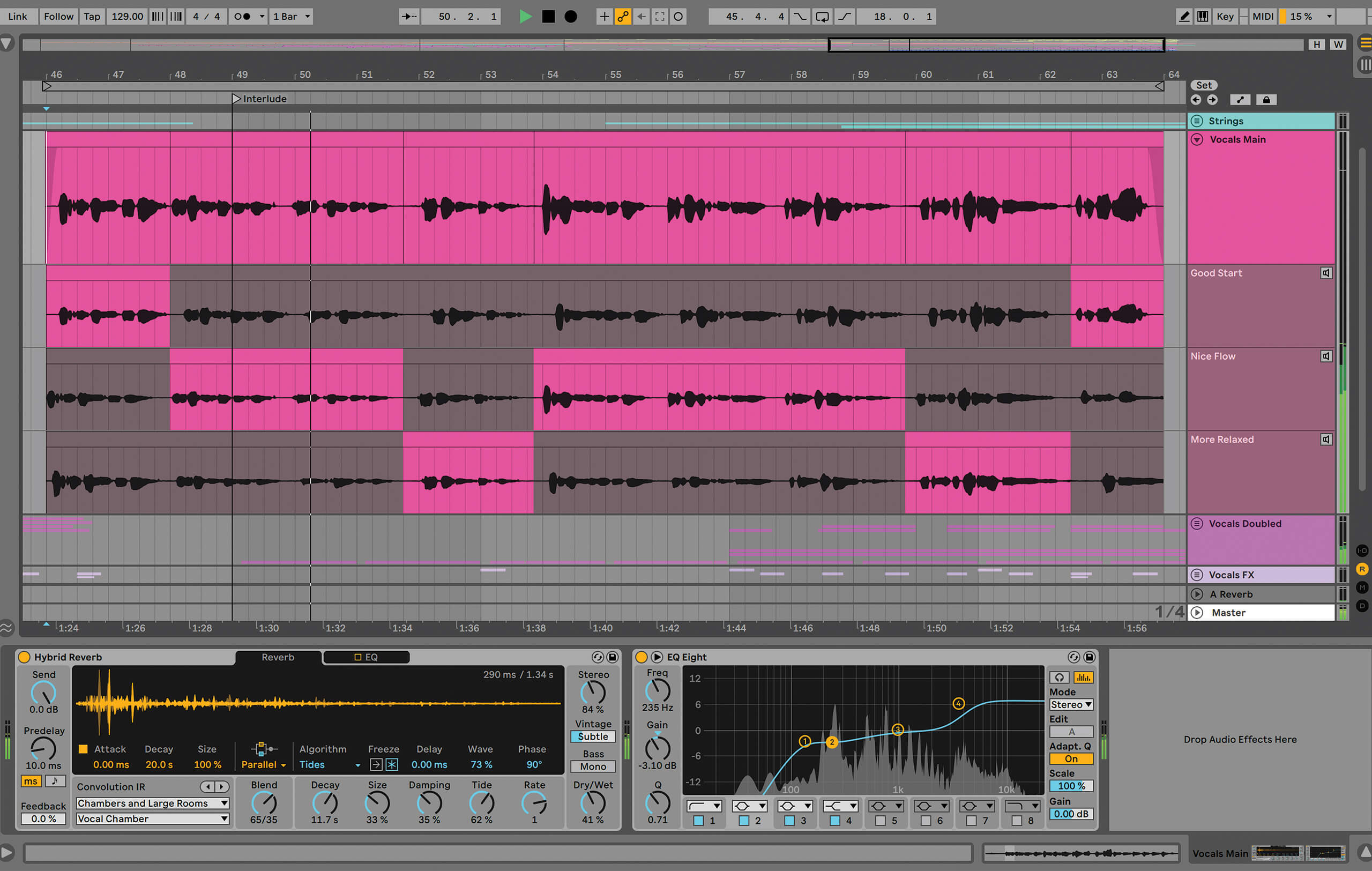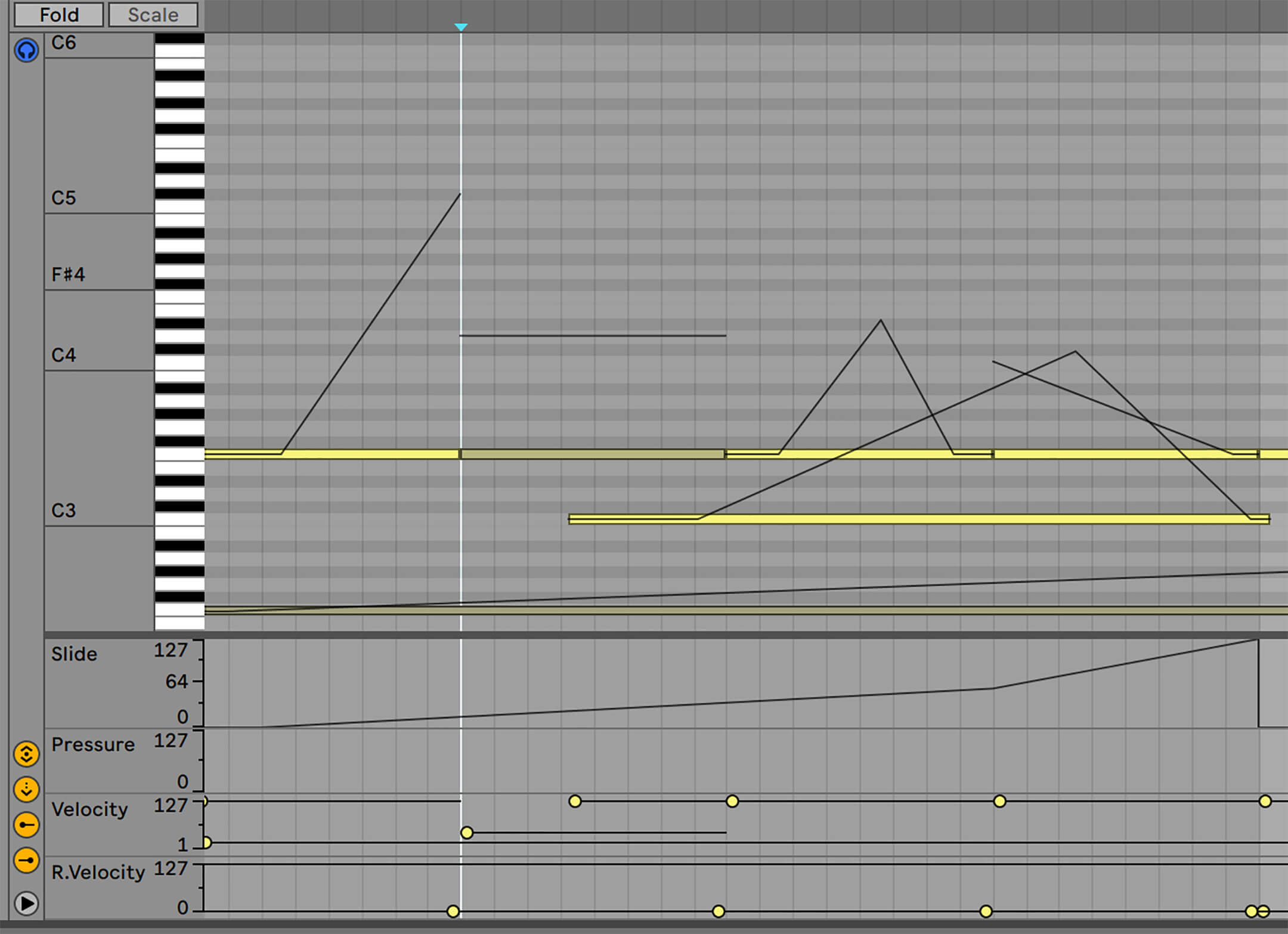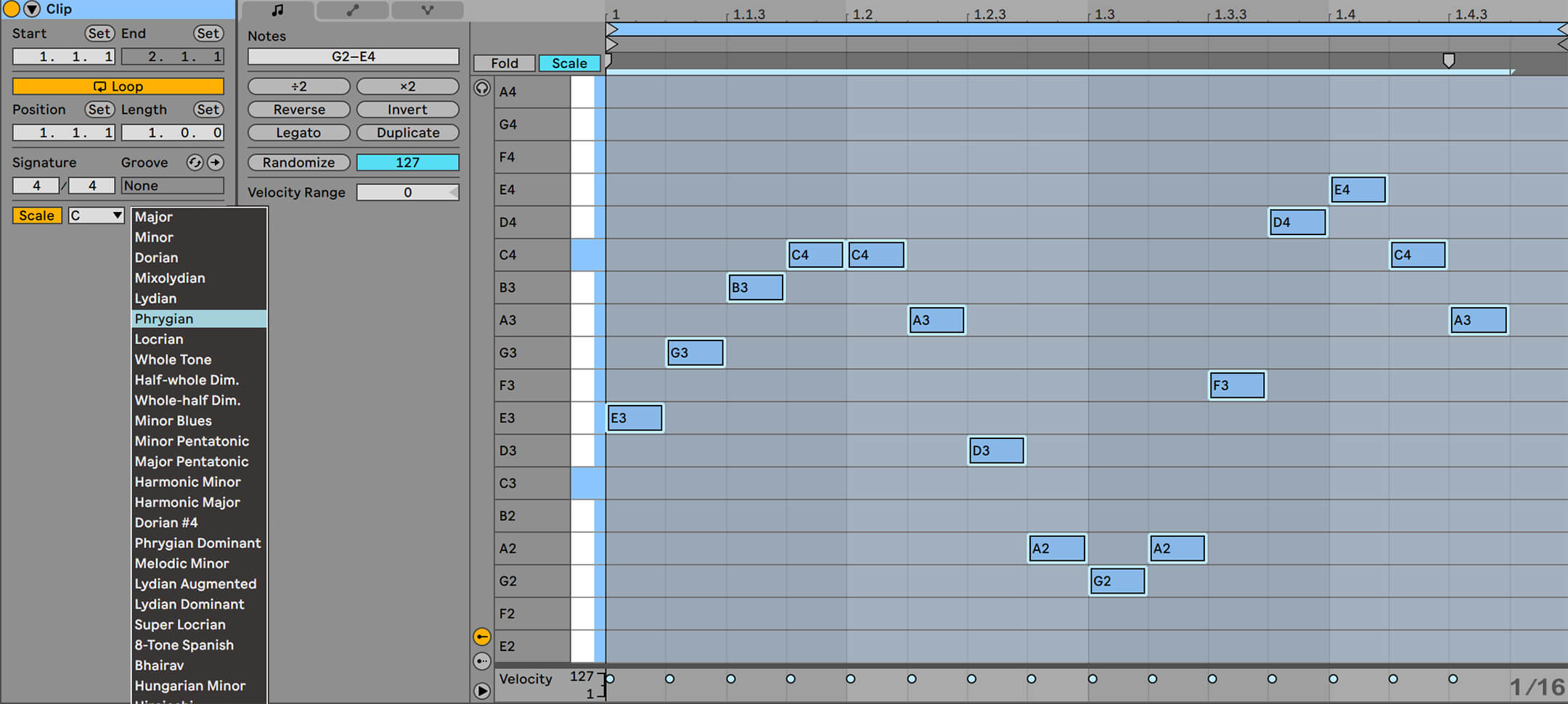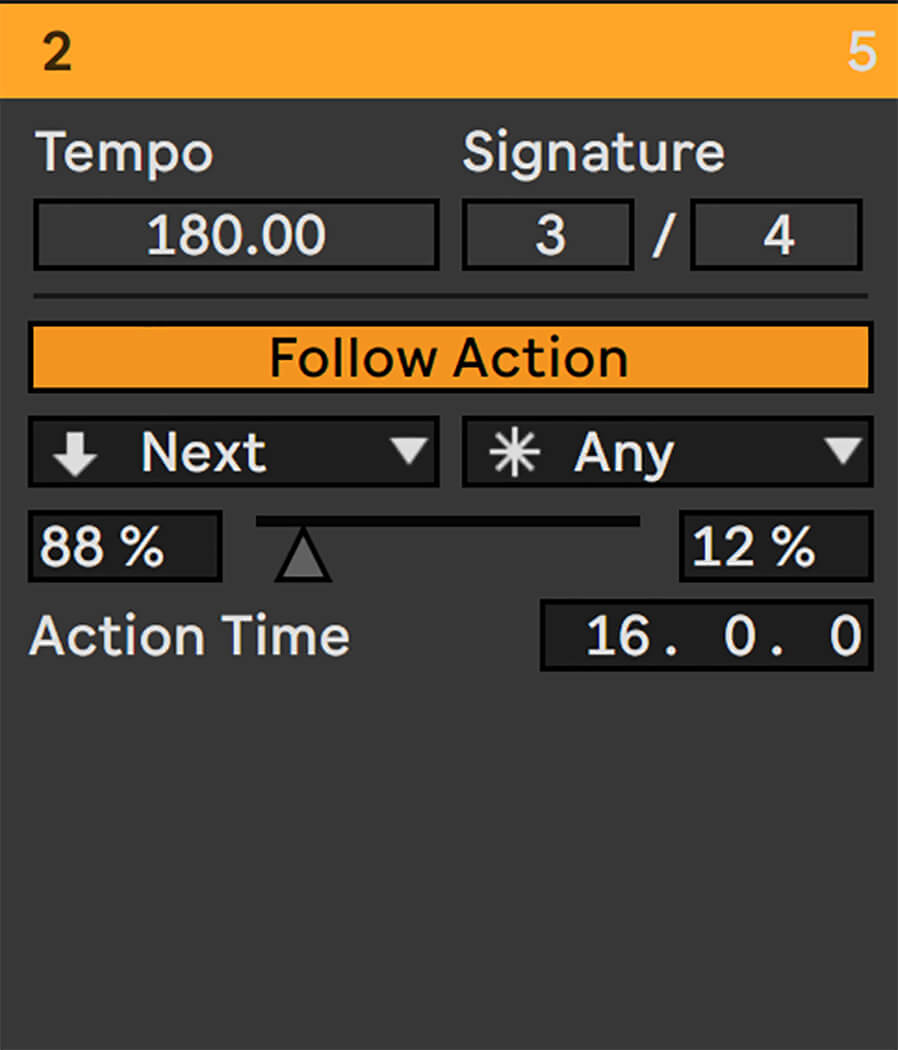The Big Review: Ableton Live 11
With its clip-based workflow, Live found favour among electronic musicians. With version 11, it improves its linear recording tools without forgetting its experimental base.


Price Live Intro £69 / $99 | Live Standard £319 / $449 | Live Suite £539 / $599
Contact Ableton
Live has always been different from other DAWs. In many respects, it’s probably more accurate to describe it as a DAW-instrument hybrid, especially when you factor in Ableton’s hardware controller Push 2. In Session View, you can keep arrangements fluid, launch clips, and still return to grouped ideas as Scenes. The Session View is ideal for improvised live performance and DJing.
Arrangement View, by contrast, can be used for linear songwriting, just like other DAWs. But it can also act as a temporary sketch pad to modify ideas from Session View or as a multi-track recorder for clip-based performances and actions.
Despite Live’s DNA in performance, one of its great strengths is the number of use cases it serves, making it the production software of choice for a wide variety of audio professionals.
However, as Live has added practical features over the years to make it more competitive against traditional DAWs, its Achilles heel has long been a lack of comping tools. Comping (or compiling) is virtually essential when recording multiple takes of a performance, and it’s a feature that has been available in almost all the other DAWs for years.

Live 11 rectifies this situation, allowing comping of MIDI and Audio recordings, and it works exceptionally well. Simply drawing in the desired sections of your takes across the many lanes of recordings will create a non-destructive comp in your main lane. You can choose to keep this comp live and editable, or render the audio (or MIDI) and commit. Couple this with the power of Live’s audio warp modes, and you’ve got stacks of editing options for natural – and unnatural – results. (Watch our overview video at 13:14 to see the feature in action.)
Live’s handling of MIDI data has been significantly improved in version 11 with randomisation factors via the new probability editor. You can now give MIDI notes a probability of playing from one pass of a MIDI Clip to the next, and even create a range of velocity values for each pass. You can set these to 100% for foundational notes, then choose lower values for less integral notes to decorate your idea. (4:06)
Scale overlays also speed up programming within a specific scale. This feature folds away notes outside your chosen scale and gives you access to a broader range of scales than you might otherwise be able to summon from memory. Users of Push 2 will be very familiar with this behaviour, so it’s great to see this option for software orientated programmers. (1:16)

The final addition to MIDI in Live 11 is the MIDI Polyphonic Expression (MPE) protocol. Put simply, this allows for sound parameters to change per-note, not just to entire instruments. With an MPE-capable controller, you can perform and record pitch, slide, velocity, pressure and velocity release per note. If you’ve seen the ROLI Seaboard, you’ve seen this in action and how expressive the player can be with all this data per note.
It’s a sound designer’s dream, too, because you can programme movement in overlapping notes. Live’s Suite’s Wavetable synth and Sampler support MPE, as does Simpler, which comes with all versions of Live. If you already own MPE instruments, such as the industry-standard Serum, you’ll be pleased to know Live 11 provides MPE support for third-party plug-ins (7:47).
New Sonic Ground
Ableton Live 11 comes with a raft of new MIDI and Audio devices. The most notable is Suite’s Hybrid Reverb which blends algorithmic and convolution elements, adding a much-needed new palette for spatial effects. Hybrid Reverb is simple to use and customise. It includes handy features such as Vintage mode for lower fidelity and a deeper sense of space than the existing reverb options. (18.58)
The two new Spectral devices (Resonator and Time) can create deep and thick textures. They’re both exciting tools for the sound designer, and we’ve no doubt they will birth some future sonic trends. (22:46)

Max for Live outgrows Suite, with Live 11 and brings its power to both Intro and Standard versions. M4L, as it’s often styled, provides many tools that you don’t get natively with the Live library. Among these are MIDI processing tools, MIDI sequencers, audio processors, modulation sources and mappable devices. Max for Live is an audio programming environment, so you can theoretically add an endless number of tools to Live.
The main range of devices and programming functionality are still reserved for Live 11 Suite users, as it was beforehand. Still, Intro and Standard editions receive some fundamental and powerful tools with this update. LFO (Intro) and Shaper (Standard) devices offer modulation of any parameter within your project, so you can, for example, design a modulation-based rhythm and then map it to one or more parameters for sympathetic movements.
Expression control (Intro) lets you turn incoming MIDI data such as velocity, modulation wheel etc. and map them to one or more parameters elsewhere in your environment. Envelope Follower (Standard) offers a similar way to get your mixes to breath and move around to the music. Rather than looking at MIDI or modulation data, it tracks an audio signal’s change in amplitude and turns that into movement on a mapped parameter. For example, it could listen to your drums then map their amplitude to your pad synth’s brightness parameter. This could then get either brighter or darker when the drums play, depending on your choice of mapping assignment. Even with limited access compared to the lavish Suite owner, these are still potent tools and a real bonus in Live 11 for those on Intro and Standard versions.
Macro overhaul
Live’s strength with audio and MIDI signal layering has always been its Rack system. Racks are group containers that allow you to hold many devices and run them in parallel or series. They allow you to create complex signal processing yet manage all the elements in a single place.
Along with Racks come macros. These allow you to assign one or more parameters within your Rack to a single virtual knob. One macro can control five parameters for more effortless performance or automation-based movements. In Live 11, Ableton has upgraded the limit of eight macros per rack to 16, but more importantly, it has also added snapshots.
Now you can configure a perfect combination of macro positions and store them to recall with a single click or automation/controller change. You can now use a Rack to store several ‘best states’ for easy recall. Snapshots are a particularly useful addition. However, Ableton could improve this further by adding slower transitions between snapshots. Immediate or timed transitions (measured in bars or beats) would make more sense, and be in keeping with Live’s approach of quantised launching for Clips and Scenes. Macro randomisation is also available, making it possible to stumble across unexpected combinations of macro positions which can be stored in a snapshot. (30:18)

A final workflow addition is that of Follow Actions for Scenes in Session View. It was already possible to configure how clips move from one to the next. In Live 11, this same function is available for Scenes, each of which can act as a container for an idea or song section.
This function saves manually launching Scenes to hear your ideas work as an arranged song in Session View but keeps things fluid enough to change your structure at a moment’s notice. It also allows you to take many ideas and randomise the playback, and record the results into Arrangement View to edit the best parts out of afterwards. For anyone who understands the existing power of Follow Actions with Clips, this is a welcome addition to the larger level of idea organisation with Scenes.
All the small things
It’s not just significant changes in Live 11. There are many minor changes in this release that resolve various little niggles. For instance, using Max for Live for complex side-chaining with tools such as Multimapper was difficult to reverse engineer when returning to a project at a later time. Now the bottom Status Bar shows you the source for your mapping to help you better navigate these complex scenarios. Newer features like Tempo Follow (34:45) help integrate Live even more with the human side of live performance as it can track a live audio tempo source, such as a live drummer or percussionist. This adds to the already impressive range of synchronisation features Live has with external hardware.
Like the new compiling tools now included, a linked track editing function now also helps Live sit better with users who want classic DAW-based editing features. This is especially useful for anyone editing multi-mic recordings such as drums, or when layers of sound design exist across multiple tracks. The MPE functionality is a big deal for those who want a deeper level of musical expression and practical workflow to go with it.
Which version?
With Live 11, Suite owners get the biggest range of new tools and library content. If you want to benefit from Live’s flexibility and get the most powerful instruments and audio processors, it’s still the best option to invest in.
Key Features
- New devices and updates
- Audio Compiling (comping)
- Tempo Follower
- MPE Integration
- Linked-Track Editing
- Scene Follow Actions
For more reviews, click here.